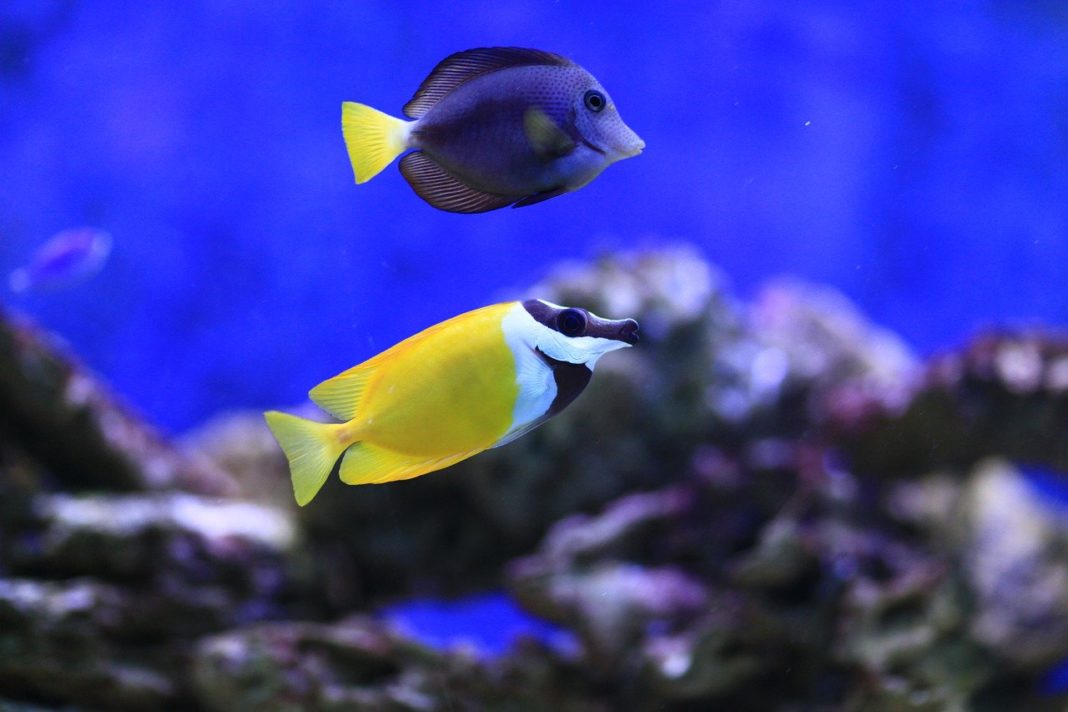If your blue tang has developed white spots, of around 0.5 to 1.0 millimeters in size, on their fins and skin, they could be suffering from saltwater ich, also known as white spot disease. Saltwater ich, which is caused by parasitic protozoa, Cryptocaryon irritans, can cause respiratory distress, lethargy, and rapid breathing to fish. However, if it’s detected early and treated quickly upon an outbreak, the chances of recovery are high.
Treating A Blue Tang With Ich
Symptoms
Saltwater ich usually appears at the onset as salt-sized white spots that are visible on the body and fins of a blue tang, although it can also infest the gills. As Cryptocaryon is more easily recognized in its beginning stage, it’s much easier to treat and cure before getting out of control.
Aside from the appearance of the white spots, blue tangs will try scratching against objects in an attempt to dislodge the parasites, and rapid respiration develops as trophonts, mucus, and inflamed tissue clog the gills. Some symptoms a blue tang could show include, listlessness, refusal to eat, and a loss of color.
Treating Ich
Copper is very effective and works well to eliminate ich when it’s at its free-swimming stage. Rather than trying to treat the blue tang in the main aquarium, the blue tang should be moved to a bare-bottomed quarantine or treatment tank. This should have the same water conditions as the main aquarium.
Because of the prolonged life cycle of saltwater ich, aquariums need to be treated for a minimum of 3–6 weeks. If the blue tangs are removed from the main aquarium into a quarantine tank, any Cryptocaryon parasites remaining in the aquarium without fish will die after a period of time, up to 4 weeks, depending on temperature.
You Need To Be Careful When Using Copper
Copper is toxic to marine invertebrates, so if you have them in the aquarium, you should move the fish that you want to treat into a quarantine tank for treatment.
Medication Tips:
Common porous materials found in an aquarium like sand, gravel, rocks, and ornaments can absorb medications. So, to better control the strength and effectiveness of the product that you decide to use, it’s best to use a tank with only some pieces of PVC tubing to provide shelter for the fish during the treatment period.
Although there are lots of over-the-counter remedies that may contain the general name Ich or Ick, you should carefully read the product information to be sure it is designed to specifically target and treat “Cryptocaryon.”
What Is Cryptocaryon?
Cryptocaryon is a protozoan that’s present in all saltwater environments, making it prevalent in marine aquariums. This widespread protozoan can penetrate the gills and skin of fish. Depending on the immune status of the fish, it may cause symptoms as mild as the fish having just a few small white spots to more severe symptoms, including irritation, loss of appetite and lethargy.
Why Do Fish Get Cryptocaryon?
The majority of wild fish are exposed to low levels of this parasite, so are able to effectively fight off the infection without making them seriously ill. In contrast, due to a relatively small volume of water and a concentrated population of fish, the amount of Cryptocaryon has a better chance to get out of hand in a home aquarium.
Preventing Re-Infestation
Unfortunately, reinfection can always occur regardless how effectively the fish have been treated if Cryptocaryon is not eradicated from the main aquarium properly, which can be accomplished by keeping the tank free from fish for at least 4 weeks.
A few days before returning your blue tang back to the main aquarium, you should clean all filtering equipment, change any filtering materials, and perform a water change.
